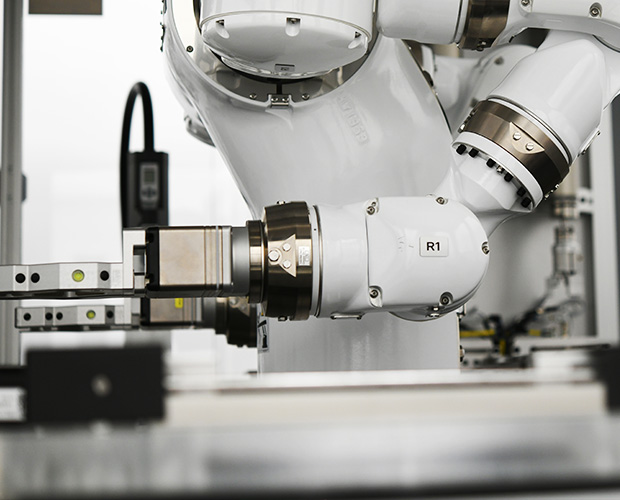Case study shows: Robots in Nanoparticle Production - Reliable, Fast and Safe
What otherwise takes hours in the laboratory, involves annoying waiting times and many sources of error, can now be accomplished by a robot in less time, well digitally documented and with high reproducibility. Automation of synthesis processes for nanoparticles can be a milestone for the use of new therapeutic and diagnostic medical devices – and at the same time increase occupational safety and relieve highly qualified laboratory personnel from monotonous routines.
Biofunctionalized nanodiagnostics and therapeutics have been predicted for some time to play an almost revolutionary role in the future fight against serious diseases such as cancer. Functional nanoparticles with special optical or magnetic properties, biofunctional surfaces for antigen recognition and/or drug loading are indeed experiencing increasing demand in biomedicine. But for regular use as medical devices, they must meet strict requirements. Essential here is, above all, the reliable reproducibility of nanoparticles with exactly the desired properties. This requires a robust and precise production process in accordance with international standards that is scalable, ideally cost-effective and also controllable at all times to ensure the highest possible quality.
This contrasts with the usually manual synthesis and processing procedures that are carried out in highly specialized laboratories on a small scale. Even with highly experienced specialists, deviations or a different interpretation of synthesis protocols can sometimes occur. If nanoparticles are to be produced on a larger scale, corresponding routines often have to be carried out in succession, which also involves risks of error. In addition, the documentation regulations require careful recording of all relevant production details and thus again working time.
As an accomplished materials research institute, the Fraunhofer Institute for Silicate Research ISC saw potential for automating particle synthesis. As part of the APRONA joint project funded by the German Federal Ministry of Education and Research (BMBF), synthesis protocols for a robot-assisted, fully automated production process have already been developed and implemented.
Now that the APRONA project has come to an end, the system has been tested by the partners Fraunhofer ISC and Goldfuß engineering GmbH in a case study in direct comparison with experienced laboratory workers. They performed the same syntheses as the laboratory robot manually. Silica particles with a diameter of 275 nanometers were chosen as the model system, as they are also taken as a basis for diagnostics or therapeutic purposes. The manual synthesis was performed according to a defined Standard Operating Procedure (SOP) by three different experienced laboratory staff members. The same SOP was also the basis for the synthesis protocol of the dual-arm robot. The time required for the complete synthesis procedure, the size distribution of the particles and the reproducibility or deviation from the target values for particle size and polydispersity - by which is meant the range of particle properties in a synthesis solution - were evaluated. According to the results, "Colleague Robot" performed better in all three areas: The particle batches that were produced automatically showed a lower absolute deviation as well as a lower polydispersity in relation to the desired particle properties. The robot required only about half the time for production. In addition, robotic manufacturing offers further advantages. Occupational safety is improved, because direct contact between humans and chemicals during synthesis is even better avoided. Documentation is automated and digital, which is enormously important for recording and analyses in databases and for regulatory purposes.
It is thus obvious that automated particle synthesis is not only possible, but also economically interesting. The system built by Fraunhofer ISC and Goldfuß is also modular and can therefore be flexibly adapted to new tasks. This is good news not only for commercial manufacturers and suppliers of particles for diagnostics, contrast media, but also for medical research and medical product development.
Last modified:

